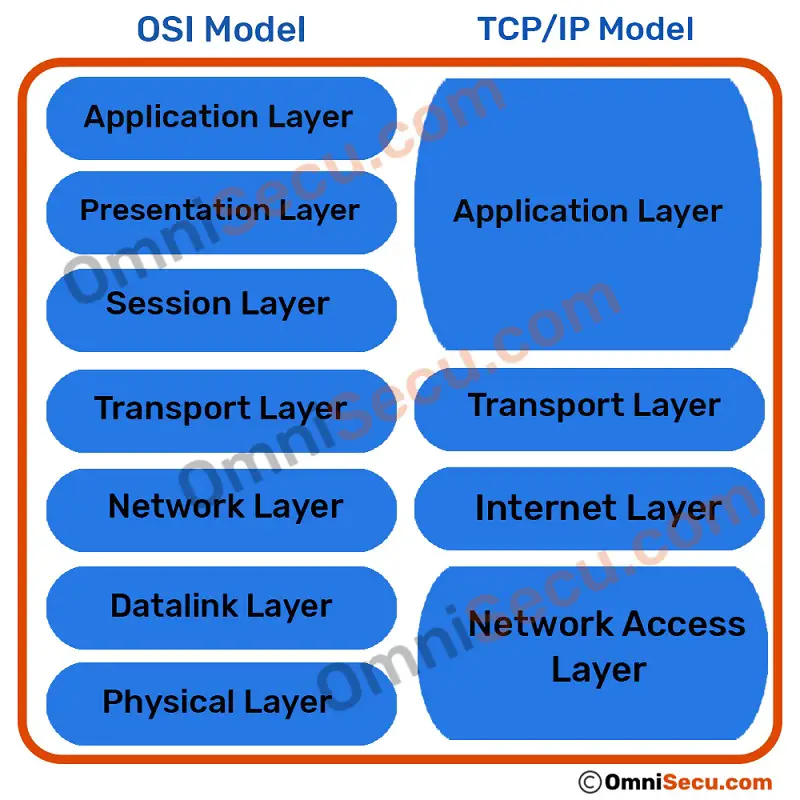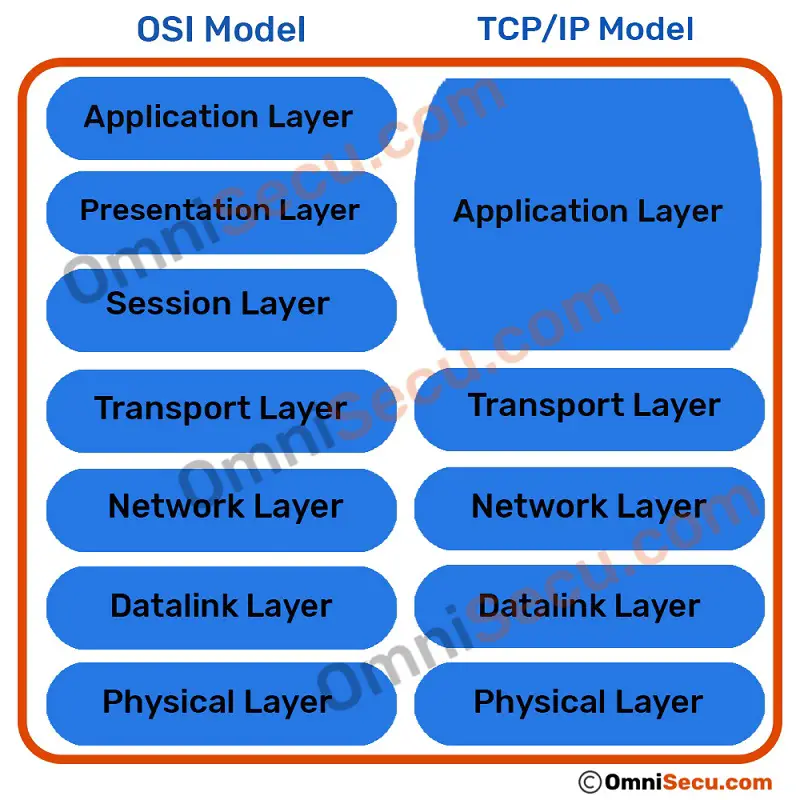Comparison between TCP/IP and OSI models
We have learned about four layered and five layered TCP/IP models and about seven layered OSI reference model in previous lessons. In this lesson, we will compare both four layered TCP/IP model and five layered TCP/IP model with seven layered OSI reference model.
OSI (Open System Interconnection) model was introduced by ISO (International Standard Organization). Currently OSI (Open System Interconnection) model is just a reference model. Means that, there are no real working implementations of OSI model on any of latest network infrastructure devices or Operating Systems. OSI (Open System Interconnection) model is used these days only as a reference model for teaching computer networking concepts and for understanding how computer networks operate.
The roots of TCP/IP (Transmission Control Protocol Internet Protocol) are with US Department of Defense (DoD). Original TCP/IP (Transmission Control Protocol/Internet Protocol) model had only four layers, and later an updated model evolved with five layers. TCP/IP protocol suite and thus TCP/IP model got wider acceptance than OSI model, because world’s largest network internet started operating using TCP/IP protocol suite.
Below list shows comparison between TCP/IP and OSI models.
- Layers of OSI model and TCP/IP model provide similar functionalities in computer networking.
- Originally TCP/IP model was a four layered model, and later updated to a five layered model. But, OSI reference model has seven layers.
- Layers of OSI reference model and updated five layered TCP/IP model layers have similar names.
- Network Layer (layer 3) of OSI reference model is called as Internet Layer in original TCP/IP model.
- Layers of TCP/IP and OSI models contain many different protocols and/or standards to provide the functionalities of each layer. For example: Transport layer contains two important protocols; TCP (Transmission Control Protocol) and UDP (User Datagram Protocol).
- Original four layered TCP/IP model and updated five layered TCP/IP model do not have Session Layer and Presentation Layer. OSI reference model has two additional layers, named as Session Layer and Presentation Layer.
- TCP/IP is a client-server model. In a network operating using TCP/IP protocol suite, clients requests for service and the server provides the requested service.
- The biggest network in the world "internet" runs on TCP/IP protocol suite. As discussed above, OSI (Open System Interconnection) model is only used as a reference model to discuss or teach networking concepts.
Following image shows comparison between OSI model with original four layered TCP/IP model.

Following images shows comparison between OSI model with updated five layered TCP/IP model.
